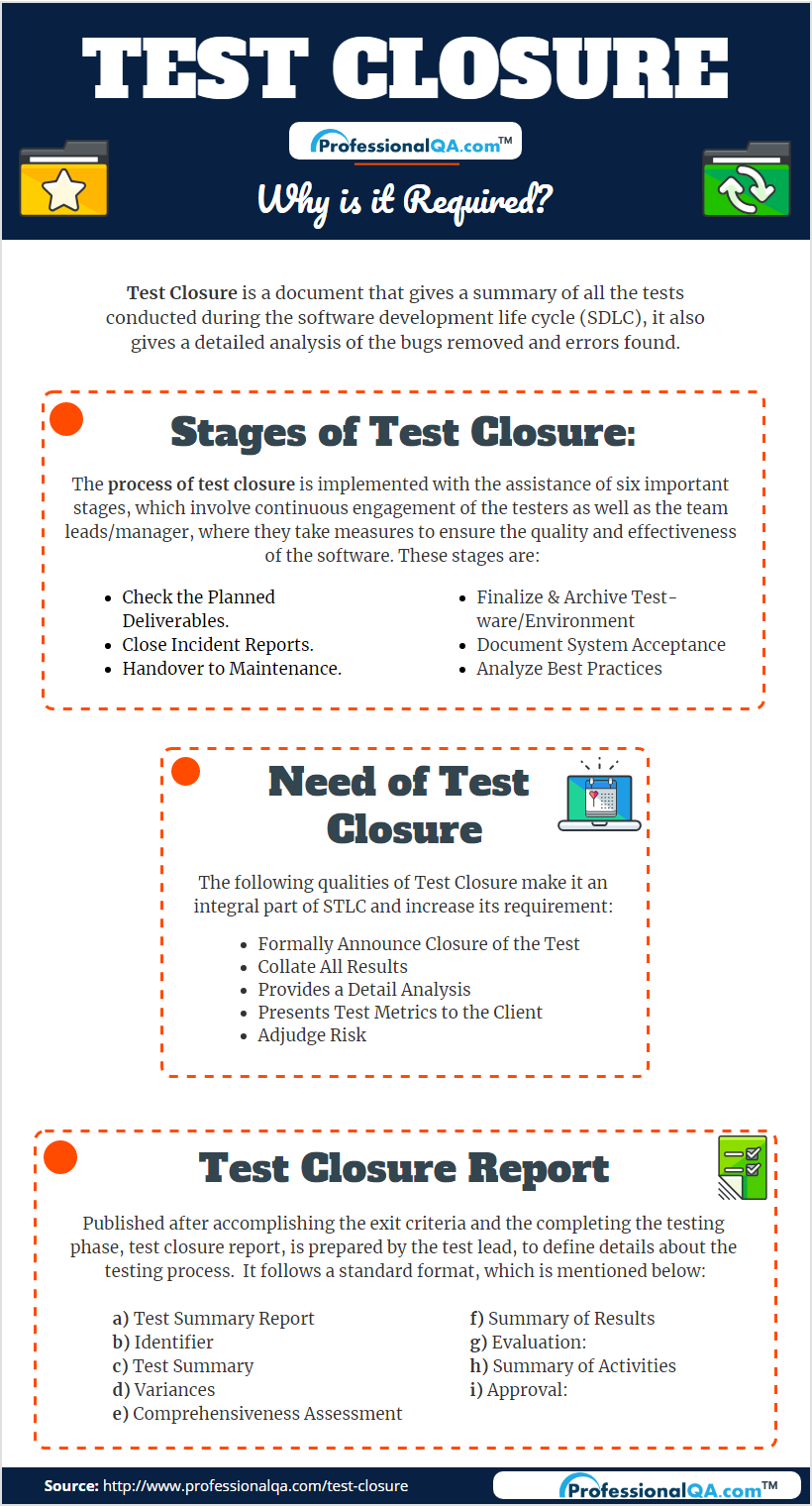

The popular belief amongst the masses is that testing during software development is just one activity which validates the strength of the software. What they conveniently overlook is the fact that testing does not involve just one particular type, in fact, it consists of many testing techniques that need to be followed carefully and painstakingly. This is a very time-consuming and costly activity that can make or mar the product. The end result of comprehensive testing is the Test Closure. The purpose of this article is to tell you about Test Closure and its importance along with other relevant information.
Test Closure is a document that gives a summary of all the tests conducted during the software development life cycle, it also gives a detailed analysis of the bugs removed and errors found . In other words, Test Closure is a memo that is prepared prior to formally completing the testing process. This memo contains a report of test cases executed, type and number of defects found, the density of defects, etc.
The process of test closure is implemented with the assistance of six important stages, which help the team check and validate various components of the software before it is released for the end users. These stages involve continuous engagement of the testers as well as the team leads/manager, where they take measures to ensure the quality and effectiveness of the software. Hence, the six important stages of test closure are:
The planned deliverables that will be given to the stakeholder of the project are checked and analyzed by the team. These mainly include test case documents, test plan, test strategy, test scripts,test data, traceability matrix, and test results and reports like test closure report. Moreover, the team here ensures that all of these planned deliverables are delivered to the stakeholders.
Incidents are the variations and deviations observed by the team in system behaviour during the process of testing. These are logged as a report in the earlier stages and closed during this stage of process. Here, the team checks that the planned deliverables are delivered and validates that all the incidents are resolved before the culmination of the process.
After resolving incidents and closing the incident report, the testwares are then handed over to the maintenance team, who provide their adept support to the software during its release and client side implementation.
During this stage of test closure involves finalizing and archiving of the testware and software like test scripts, test environment, test infrastructure, etc for later use.
Here, every aspect of the developed software and application along with its supporting data and information is accepted by the customer representatives before the implementation of the software system. This involves system verification and validation according to the strategy outlined and defined in the validation section.
This is the last stage of test closure, wherein the learned lessons are analyzed for future references. This helps determine the various changes that might be required for similar projects and their future release. Moreover, this information is gathered and then used to improve the maturity of tests. The most important factor about this document is that, it records the best practices for similar future projects and make it easily accessible for others.

Test Closure is a very important part of software development. This is because it performs the following functions:
Published after meeting the exit criteria as well as the successful completion of the testing phase, test closure report is prepared by the test lead to define various details about the process of testing, such as test passes carried out, their results, outstanding defects, exit criteria, testing performed, defects addressed, defect trend analysis, etc.
Moreover, this report is further reviewed by other stakeholders of the project, which ensures its accuracy. This report, in short, indicates the culmination of testing and is an important part of Software Development Life Cycle (SDLC). Find more on test closure/summary report, here.
Usually, Test Closure is done after getting a sign off from the client as well as the project team. It documents all that was promised to be delivered and all that is actually delivered. It is a documented proof, that can be referred to at any time by either party, of all errors and their corrective actions, test cases, and their analysis, software metrics etc. Test Closure marks an end to all testing that can be done on the software and hence, it is the final step before the actual release of the final product. You can explore our new document on test closure activities here.
Advertisement: